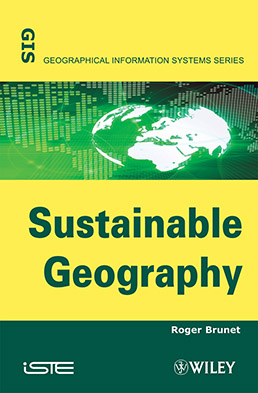
Sustainable Geography presents an overview and selection of original and thematic treatments on the use of, and relationship between, scientific methods and field work in geography. The method of linking different layers of information in geography – from the physical, geological, and topological information of physical geography to the population and urban development focuses of human geography – with cartographic and spatial data emerged from research work carried out by the author in the 1970s. The representations formed were known as choremes, and the approach allows for a new perspective to be taken on issues such as economic development, urban planning, and other geopolitical topics. One of the most famous examples is Brunet’s “blue banana” which describes a theory of the formation of modern western Europe along a curved backbone of urbanized regions that bypass France.
Topics covered include: laws of production of geographic systems, structures and beings; discontinuity, thresholds, isolations and alienations in territories and landscapes; new means of systems analysis and representation through choremes and chorematic modeling; globalizing scales and European structures and dynamics; geography and ethics for sustainable development.
Part 1. Geographical Space Production: Systems and Laws
1. Geography: the Hard Core of a Social Science.
2. The Geon and Energy of the System.
3. Geographical Fields as the Environment of Places.
4. Laws of Geographical Space Production.
5. Sense of Distance.
Part 2. Broken Space
6. Discontinuities and Thresholds.
7. Territory Retrenchments.
8. Antiworld and Alienation.
9. Free Zones in the International Division of Labor.
10. Geography of the Gulag Archipelago.
11. Geography of Migrations or the Antiworld in Spate.
Part 3. Models and Chorematics
12. Building Models for Spatial Analysis.
13. Model Maps and Choremes.
14. Models in Geography?A Sense to Research.
15. Mediterranean Models.
16. The Aquitaine Region as a Corner.
17. Structural Dynamic of the City of Tours (France).
18. Analysis and Representation of Spatial Organizations: A Few Models.
Part 4. Scales of Globalization and Moving Europe
19. Ways, Forms, and Figures of Globalization.
20. Aspects of Globalization: The Diamond Revolution.
21. European Fields and Mainlines.
22. Transnational Urban Systems in Europe: Towards a New Modernity.
23. Russia in Revolutions.
Part 5. Geography into the City Prospects
24. Regaining Reason.
25. What is Geography?.
26. Geography in the Public Place.
27. Geography and Human Rights.
28. Dimensions of Sustainable Development.
Roger Brunet was Professor at the Universities of Toulouse and Reims in France, then Director of Research at the CNRS in Paris and worked for the Intergéo laboratory and the public interest group RECLUS in Montpellier. He was the founder of the international scientific journals L'Espace géographique and Mappemonde, as well as the originator of the concept of the choreme.